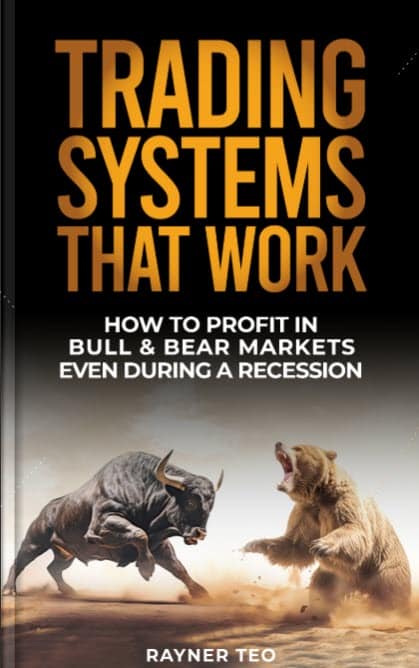Subscribe
Apple | Google | Spotify | Stitcher | Soundcloud | YouTube
In today’s episode, you’ll learn practical strategies to manage your trading psychology so you can master your mind and money.
(Hint: It’s neither meditation nor hot yoga.)
Tune in right away…
Resources
Trading Psychology: 6 Practical Tips to Master Your Mind and Money
Trading as a Business — The Essential Guide
Ed Seykota: 19 Trading Lessons from a Market Wizard
Transcript
Hey, hey, what’s up my friend?
In today’s episode, I want to talk about trading psychology – how to master your mind and money.
Here’s the thing…
When it comes to trading psychology, one of the biggest issues that traders face is that they have this “need-to-make-money” syndrome, especially for those who attempt to trade full-time.
“Need-to-make-money” syndrome happens when you have difficulty following your trading plan because you need to put food on the table.
Let’s say you’re trading in February but you’re in a drawdown.
If you don’t make money this month, how are you going to put food on the table? How are you going to give allowance to your kids? How are you going to pay your mortgage? How are you going to pay your bills?
So what do you do?
If you’re in a loss, you might shift your stop loss further so you don’t have to take the loss. You might double down and trade even larger, hoping to make back your loss over the next one or two trades.
You can see that this type of action will lead to disaster.
You might get away with it once or twice, but it’s only a matter of time before you lose a huge chunk of capital. And that’s it. That’s the end of your trading career.
Now the question is how do you overcome this? How do you master your mind and money?
So let me share with you 4 tips.
1. Have multiple sources of income
There are many ways to do this.
You can, have a part-time job, like tutoring people to get another source of income on top of your trading income.
Even if you don’t make money from trading, you can at least still put food on the table.
Another way you can do is through affiliating. Basically, you get paid for recommending services or products to others.
For example, I use TradingView, and if I refer TradingView to a friend and he signed up for a pro account, I get a small commission fee.
Or maybe through introducing broker. For example, if you are happy with a broker that you’re using and they have an introducing broker program, you can refer a friend to the broker, and you’ll get a cut of the fee.
There are many ways to go about it and the first thing that you want to do is to not make trading your only source of income – have multiple income streams.
2. Set aside money to cover living expenses
You want to have a pool of money set aside to cover your living expenses, ideally to cover 12 months or more.
This way if you’re in a drawdown for 2 or 3 months, it’s not going to affect your livelihood because you already have money set aside to cover your living expenses be it paying for the mortgage, the bills, allowance for your kids, etc.
So that greatly helps as well.
3. Know your deepest drawdown
This will be very easy to find out if you’re a systematic trader. The report will show you what is your deepest drawdown.
Let’s say based on historical backtesting or maybe your own trades, you realized that your deepest drawdown has been 30%.
So whatever drawdown that you’re in right now, maybe it’s about 20%, you know that historically, some point in time, you actually encountered a worse drawdown and still survived from it.
At the back of your mind, this will give you the confidence to keep trading because this is not the worst that you have experienced before.
So third tip is knowing your deepest drawdown.
Next…
4. Increase your net worth relative to your account
Let’s say your net worth is a million dollars.
You don’t want to be trading a trading account that’s almost a million dollars because your entire net worth is on the line.
And if you do that, your trading psychology is going to be very difficult to handle because 1% of that is basically 1% of your net worth on every single trade. It’s very difficult to swallow.
So what you have to do is to increase your net worth relative to your account size.
Let’s say the ideal account size that you want to trade is $200,000. Then don’t have a net worth of $200,000. Increase it to $1 million. So that your trading account is only one-fifth of your net worth.
If you want to be trading a $1 million account, then ideally have a net worth of like maybe $4 or $5 million. So your account is not a huge portion of your net worth and that helps you execute your trades more consistently.
If you have read the trading quotes by Ed Seykota, he recommended having not more than 10% of your net worth rate as your trading account.
To me, 10% is a little bit low. I’m still young, I don’t have many obligations. So I’m willing to actually push the figure up to 40% or 50%.
So you have to find out what percentage suits you, given your own circumstances.
But the general guideline is this:
The greater your net worth is relative to your account, the easier it is right for you to execute your trades consistently.
With that said, I’ve come to the end of today’s episode and I’ll talk to you soon.


First!